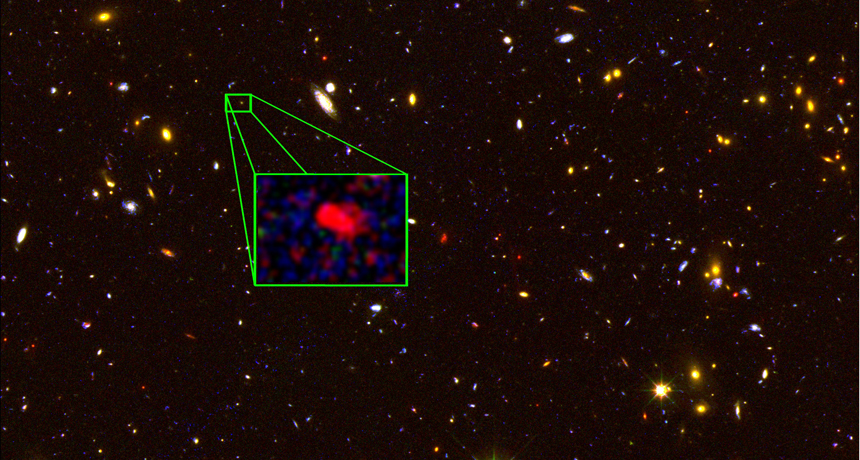Oldest, most distant galaxy found
Its light comes from a time shortly after the Big Bang

This Hubble Space Telescope image shows the most distant galaxy discovered to date. The green panel zooms in on the galaxy, which astronomers see as it existed only 700 million years after the Big Bang.
NASA, HST, CANDELS, V. Tilvi and S. Finkelstein







